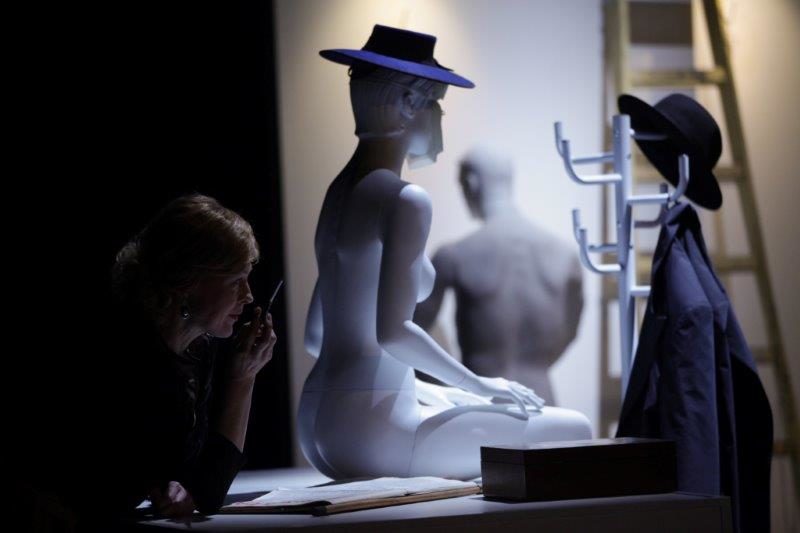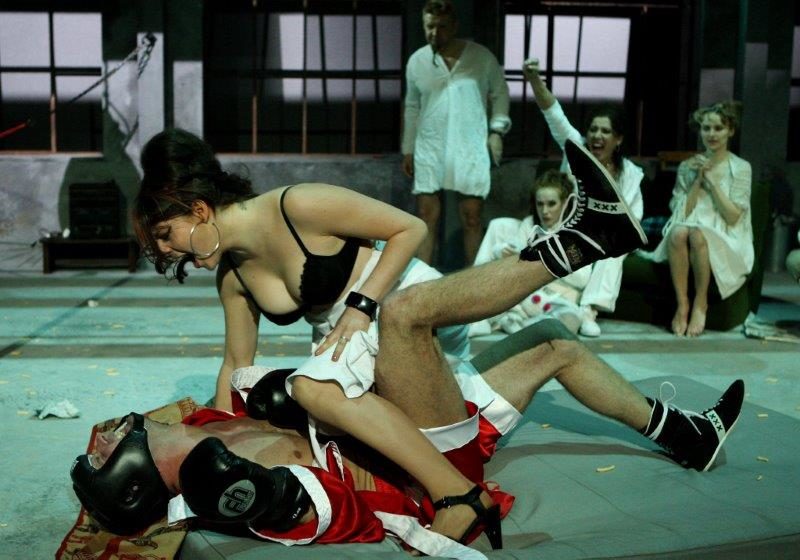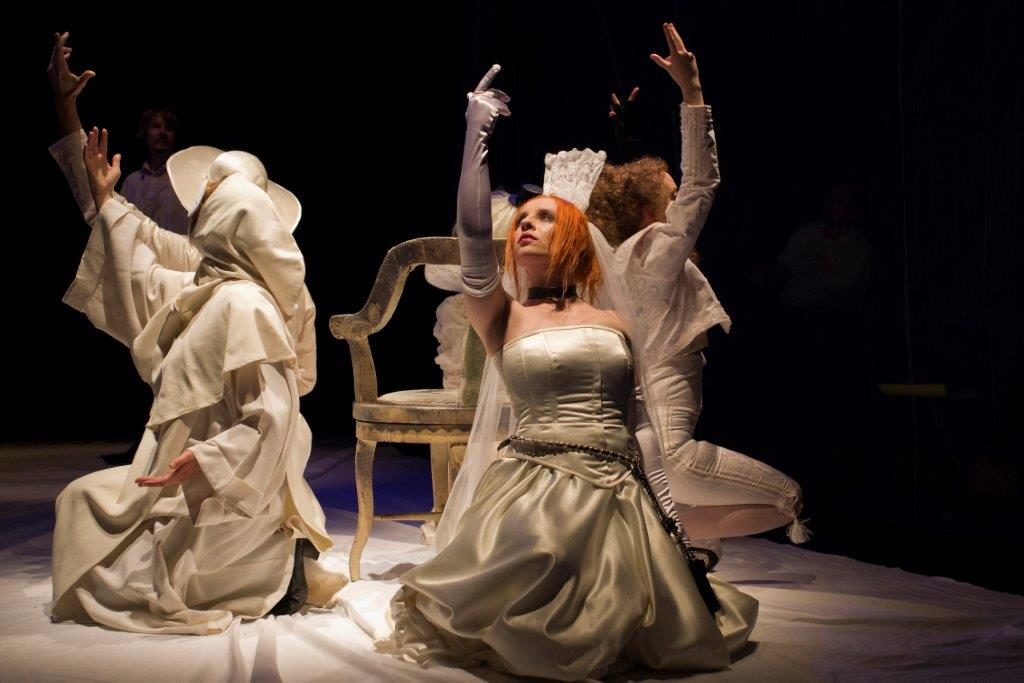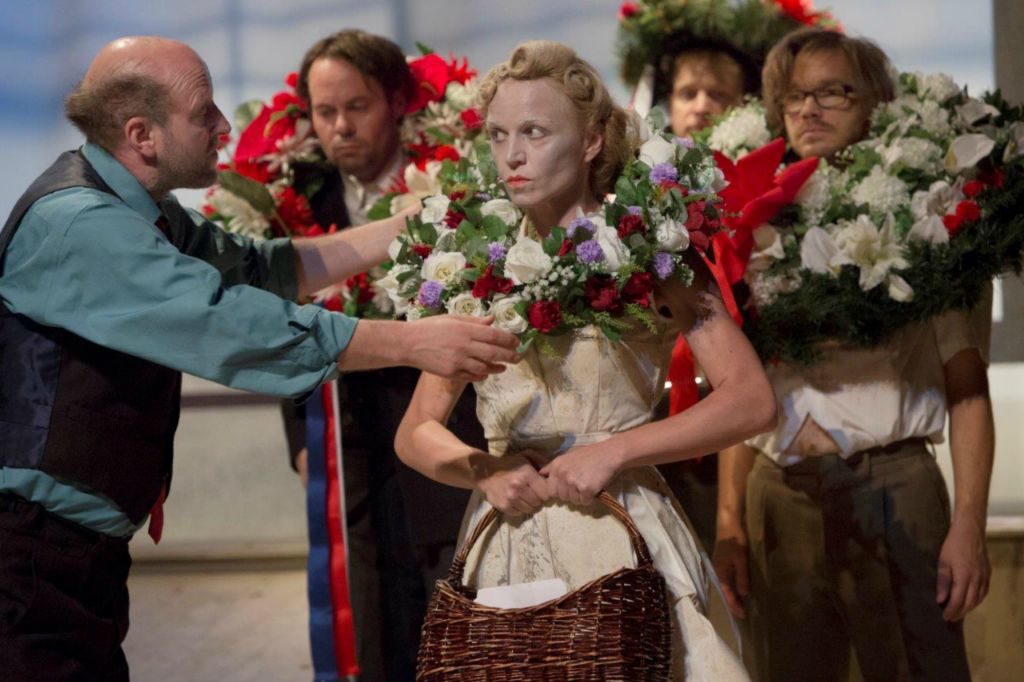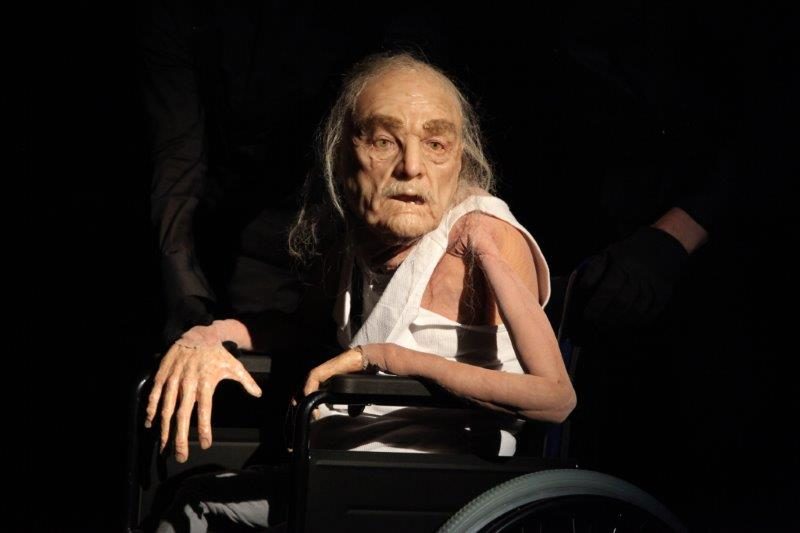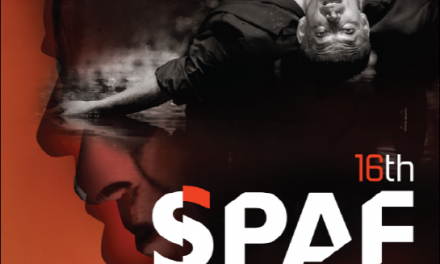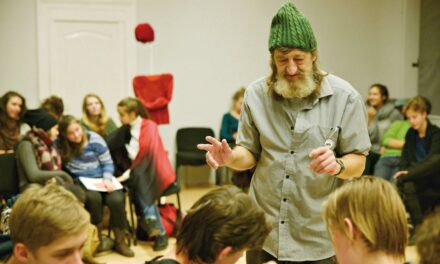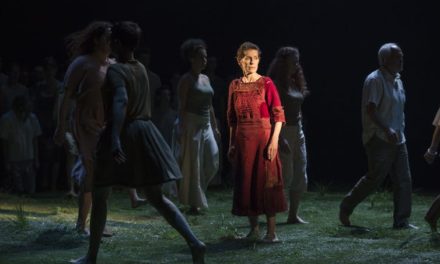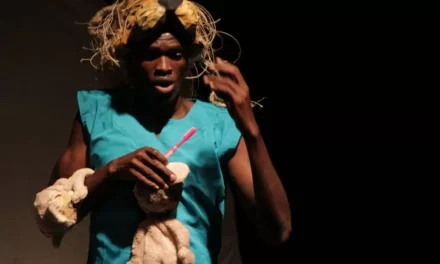We began in February with the first trip to Bratislava to see the S.T.O.K.A. theatre production and ended in June at the “Dotyky a Spojenia” Festival at Martin. We visited 19 theatres (12 state-run, 7 independent), saw 54 productions and made 4,000 kilometers on our “wonderful” roads. That, perhaps, allows us, to share a few lines about the state of theatre in Slovakia and a little about the productions of the past season. It is the year 2015.
Theatres in dramaturgical vacuum
It might be just our opinion (though one does not have to leave home to check the reality, all it takes is to review the online repertory of Slovak theatres), but most Slovak theatres seem to have given up on the actual world outside their walls. There are pitifully few theatres and the artistic teams do not merely seek all-embracing production topics but rather bring proven titles to accommodate the expectations of their traditional audiences. As if the role of theatre dramaturgy were to merely preserve some diversity of titles in order to have comedy, musicals, and a bit of tragedy, a single classical piece would be good too–better so if entertaining. Yes, we speak particularly of the official stage, i.e. the state-funded institutions, the Ministry of Culture, higher regional self-administration. And yes, we do understand all operational and organizational rules.
One ought to say that most theatres do not have their specific face, dramaturgical profile, or even a vision of such a profile. There are always exceptions to the rule and we have four of those. First, the Arena Theatre has been, for a long time, bringing productions by clear-cut authors, addressing provocative and controversial topics derived from our historical memory. Second, the City Theatre Žilina, in addition to traditional titles and local projects (thus supporting original drama work), pours its annual energy and dedicates its creative potential into its “flagship scheme” – contemporary European drama. Third, the Puppet Theatre on the Crossroads (Babkove divadlo na Razcesti) offers “traditional productions for children” and also focuses on toddlers, youth, adults and family issues. Fourth, the Slovak National Theatre has become, over the recent years, an open public institution that offers, in addition to evening performances, a range of activities for new audiences (the productions at the Blue Salon). Its international projects also have dramaturgical ambition.
From this point of view – looking at theatres from dramaturgy to the profile of a cultural institution, the independent stage is, in general, much further than the official one. The creative teams within the independent stage bring focus on current societal themes and are able to respond promptly to the direct presence and comment on us “here and now.” This concerns, in particular, the Bratislava-based stage and about artists of theatres SkRAT, STOKA, Ticho a Spol, and Honey and Dust. There is also a number of smaller-scale projects produced by independent centers (e.g. The Garden in Banska Bystrica). The mentioned exceptions from the national average highlight the fact that the concrete theatre management is courageous enough and conscious of limits being only within us. It is up to us how we will push our limits and limits of the audience.
Spectator (not) welcome
We do not know to which degree the lack of attention to audiences on the part of Slovak theatres is a matter of a lack of foresight, of a tradition or ossification. It is related to the aforementioned dramaturgy, but the issue of audience in Slovak theatres is much broader. As we suggested earlier, most repertories consist of all-embracing, popular and often forthcoming titles. It is obvious that the auditoriums are filled and people leave the theatres satisfied because of attending something cultural. The reality, however, is such that most evening performances that we saw were attended by the elderly and less so by people in active age. One could count the number of youths by a single hand.
Most cases involve “closed cultural institution:” audience has the right to enter them only when they are willing to purchase a ticket and when the performance is on. We appeal to the directors, dramaturgs and artistic directors of the theatres to launch a system of public education events (particularly for children and youth), to offer activities (perhaps across other art disciplines) for different, “new” audiences.
That requires some courage, but also much more concepts, communication, and energy than usual. If our theatres do not turn into open institutions, we would be truly left with nothing but a need to accommodate the needs and expectations of our traditional audience.
In Slovakia, we also have examples of working with audience above the framework of traditions or habits. There are theatres that offer the audience a space to relax in their theatre club, develop their own educational events focusing on theatre, import other contemporary arts into the premises (particularly fine art and music, rarely film projections), and organize discussions on different social themes. In this respect, the independent centers enjoy a certain advantage, for they engage in such activities (not customary for the traditional theatres) automatically, regularly and throughout the year.
Not to step out of line!
It can be stated that most Slovak theatres are mediocre in terms of production approaches. Productions of titles proven internationally or on Slovak stages are largely built as a craft (more or less successfully), without deviations, but also without surprises. One can seldom see productions of classical texts that offer a different, unusual and non-traditional interpretations. If a more daring master appears, the production approach is overcautious. Regrettably, one can still come across productions, the dramaturgy and direction from the last century. They are virtually indistinguishable from the amateur companies which, using similar types of productions, would not pass even through district drama competition.
When speaking of the modern wave in Slovak theatre, one that has the courage to step over the limits of theatrical conventions, one ought to mention a few leaders and groups such as Rastislav Ballek, Martin Čičvak, Marian Amsler, Slava Daubnerova, Eduard Kudlač, and Debris Company. The young artists from Studio 12 working within the Milk Teeth project have shown the zest to experiment, as have the female authors of the Mamma Has Me project (from the now inexistent space of the Elledanse Theatre).
Having just discussed the independent stage as an active interpreter of current societal issues and the progressive multi-genre space, it ought to be also said about works of the independent scene that most productions are in the stage of draft, lacking sufficient master craft and being surrounded by superficiality. That raises a question whether the root cause is in limited inventiveness among the independent authors or whether they are determined by other factors closely linked to limited funding for their projects, staffing or an absence of better technical equipment. It seems that, in most cases, option B is correct. If the independent stage was taken to be incubator for theatrical innovators and offer the producers such space to deliver their projects on stages of official theatres (where they would be able to develop their methods under more favourable financial, as well as operational and technical conditions as is the case in some other European countries), it would launch revitalisation of Slovak theatrical space.
We do not want award interviewers, but critics
There is not much for what to envy theatre critics in Slovakia. It may come across as vulgar, but it seems as if they were people from the theatre whom no one needs. Their works are virtually without feedback. It is of no interest to the makers, it is irrelevant to the founders, members of culture committees and grant commissions. An ordinary viewer can hardly access a review. What about a wide public? It is an irrelevant question amidst the atrophy of space dedicated to culture in Slovak media. A critic is no longer a partner to the makers, the barometer of quality for an audience, or an authority for administrators serving in culture departments in national and regional institutions. Theatres saw a departure of discussions attended by theatre critics who would be impressing the literate audience and self-centered makers with noblesse, “well-taken” phrases, extensive knowledge and excursions to other disciplines. This is not the place to contemplate the mistakes – when and where it occurred. It is, however, clear that Slovakia lacks a whole middle generation of theatre critics whose views on Slovak theatre would serve as an impulse and inspiration for theatre-makers, be the signal light for audiences and a “rating agency” for the founders of theatre, possibly also the Slovak Ministry of Culture.
In Hungary, more people attend discussions with selected critics than the performances. In Germany, an “unfavorable” review can cost the theatre management their jobs. In Slovakia, a critic is nobody. Quite on the contrary, it seems that anyone can be a critic (or the award interviewer). One can only hope that a restart of a new theatre criticism enters the discourse of our festivals, cultural institutions, and a wider public. We appreciate that it is theatre critic who ought to be one of the parameters of assessing theatres vis-a-vis their founders. Alas, it seems enough today for a theatre to show sufficient audience rate and a balanced budget. Artistic parameters seem to be third-rate. The founders essentially do not care about their theatre receiving any award for its work or receiving devastating reviews for their productions. We thus witness two extremes. First, theatre management being replaced even though a given theatre produces quality shows and enjoys success. Second, a situation (plenty of those in Slovakia) when an artistically stagnant or even declining theatre is run by management “serving for life” there. The term of director’s office is unlimited and the accountability of results does not exist after the end of service; top specialists in the field are not invited to serve on selection committees for the directors.
Conclusion
During the four months of our field trip to Slovak theatres, we did not avoid conversation about theatre and identifying the key problem areas which we came across during the journey. Hopefully, this can serve some good and we do not end up as the aforementioned critics, with a handful of pages of futile text serving no one and nothing. One of the assignments we were given by the conveners of the Divadelna Nitra Festival was to pick productions from Slovakia for the program of the international festival. It was not an easy task. We focused, particularly on drama productions. We were intensely interested in the productions by both official and independent theatres. We did not discriminate against makers in terms of age or geography or production approaches. We wanted to see as many productions across the season. Six productions eventually made it to the shortlist for the International Theatre Festival Divadelna Nitra 2015: Mojmir II Or The Twilight Of An Empire (Slovak National Theatre, Bratislava), Reverse (Thalia Theatre, Košice), The Golden Dragon and The Notebook (Andrej Bagar Theatre in Nitra), The Drunken (City Theatre Žilina), Home Eros Faith (Honey and Dust, Bratislava). In terms of the festival theme and the scheduled foreign productions and because of our inclination to author type of theatre we eventually decided not to include in the Slovak program The Golden Dragon and The Drunken.
We trust that the selection of the Slovak production offers a representative sample of the past season and a concentrated picture of the inventiveness of makers of the younger and middle generation.
Iveta Ditte Jurčova, director / Theatre Poton, poton.sk
Michal Ditte, playwright and dramaturg / Theatre Poton
Curators of the programme of Slovak theatres Divadelna Nitra 2015, http://www.nitrafest.sk/domov/novinky/
This post was written by the author in their personal capacity.The opinions expressed in this article are the author’s own and do not reflect the view of The Theatre Times, their staff or collaborators.
This post was written by Iveta Ditte Jurčova and Michal Ditte.
The views expressed here belong to the author and do not necessarily reflect our views and opinions.

